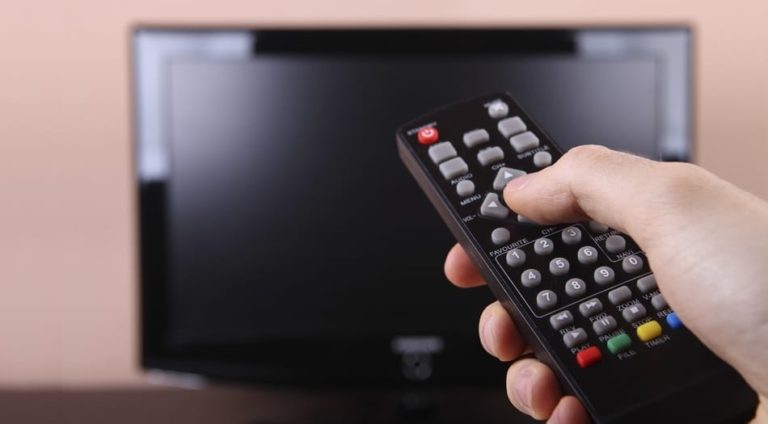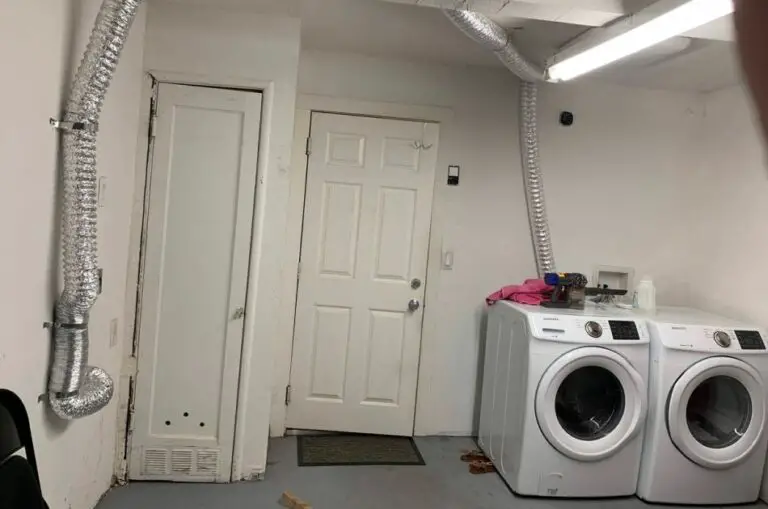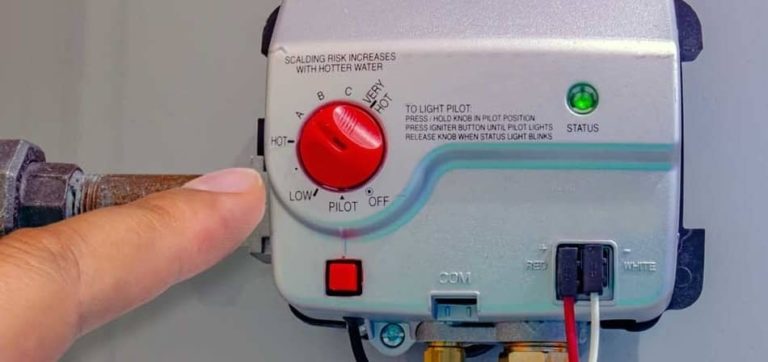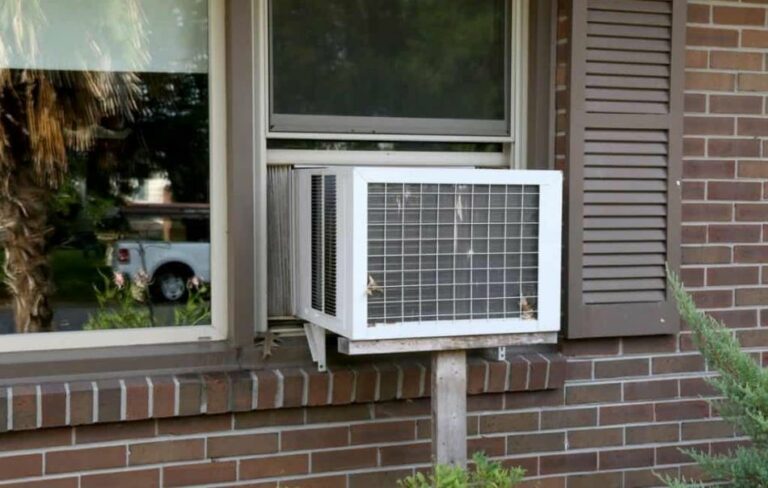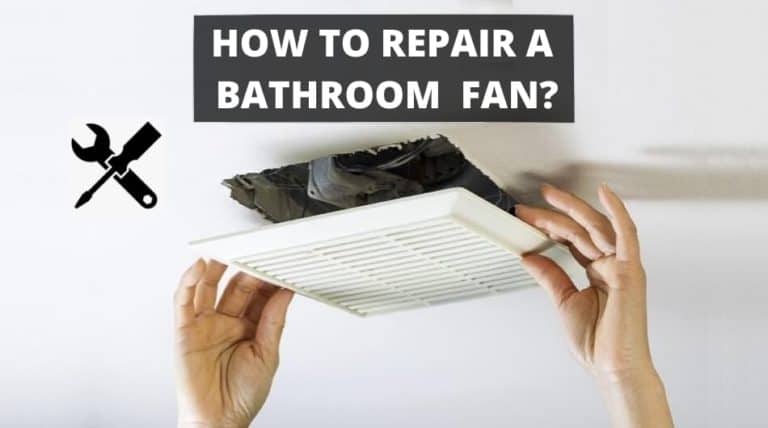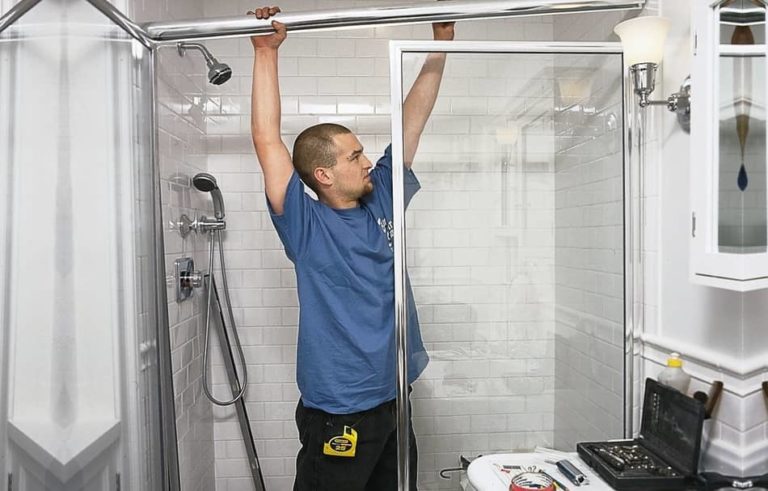How to Turn Off Your Home’s Electricity?
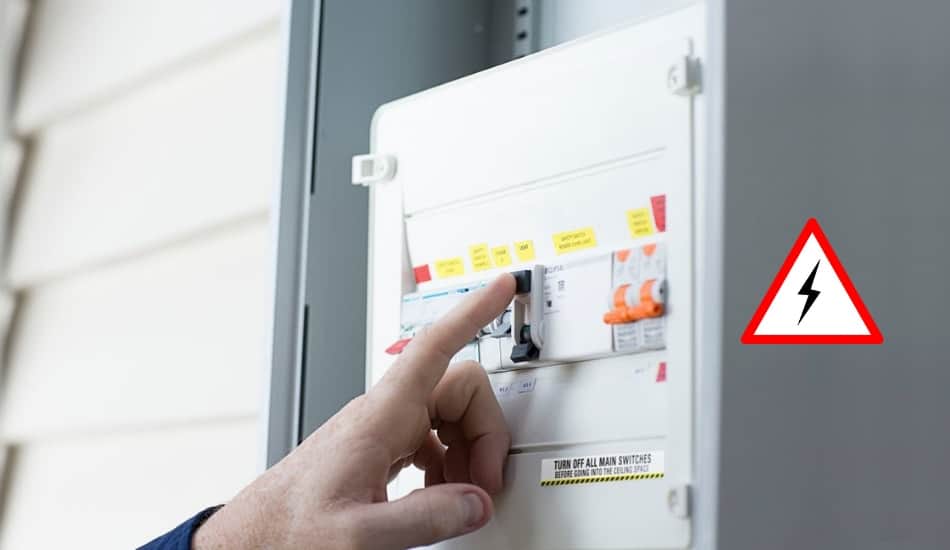
Do you plan to carry out a domestic electrical installation yourself or to troubleshoot a faulty installation? The first thing to do is to turn off the power, in order to avoid an electric shock. This precaution is valid even if you are just going to replace a socket or switch that no longer works. Knowing how to safely turn off electricity in the house is a safety measure that all families should learn. So that’s why we’ll make sure to teach you how to do this properly. Let’s start!
How to Turn Off Your Home’s Electricity?
So How to Turn Off Your Home’s Electricity? To turn off the electrical power to the entire house, locate the main electrical panel, and flip the main circuit breakers that are located at the top (usually a double-width switch) to OFF. To turn off the electrical power to individual rooms, turn off the branch circuit breakers.
You may need a flashlight on hand when you turn off the power. If you have an older fuse box in your house, you need to pull out the fuse block or pull the main disconnect to turn off the power to the house. Remember that you need to unscrew (counterclockwise) the individual fuses if you want to turn off individual circuits.
After you turn off the power to a circuit, always make sure to test for power in the devices and wires on which you will work. You can do that by using a non-contact voltage tester.
Note: Do not touch any connections, sockets, or electrical wires! In most cases, top circuit breakers usually turn off electricity to the entire house, while the lower circuit breakers are meant for individual branch circuits.
Start at The Main Electrical Panel
The main electrical panel is usually located in the garage or basement and it contains either circuit breakers or fuses. The panel needs to be easily accessible. If you live in an apartment, it may be recessed into the wall in a closet. The electrical panel usually comes in a gray metal box or door. Older homes sometimes have more than one electrical service panel. This is because subpanels are added to older systems to expand the number of circuits.
Examine the Main Electrical Panel
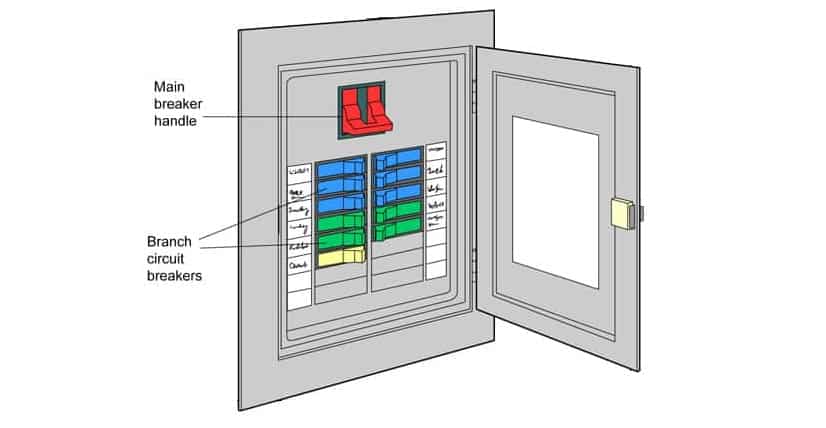
In almost every house the main circuit breaker is located inside the main panel at the top. The main circuit breaker controls all of the power that is coming into your home. So if you find yourself in a situation where you need to turn off the electricity in your house, this is the one you need to shut off.
Keep in mind that the main circuit breaker does not turn off the wires that stretch all the way from the main panel breakers to the electric meter and that they are electrically charged.
Always make sure that when you open the main panel’s cover, to check and see that there are no exposed electrical wires. A protective panel must conceal all wiring and there must be only breakers or fuses that are exposed.
If you notice some exposed electrical wires, be sure to call an electrician to repair your electrical panel and make it safe. Just one touch to the wrong wire or bare metal in an exposed electrical panel can lead to serious injuries or even death. That’s why you should never touch bare metal contacts inside your disconnect panel.
To make sure the electricity is turned off in your house, just shut off a circuit breaker by simply flipping its position to the OFF.
How to Turn Off Electricity in One Room?
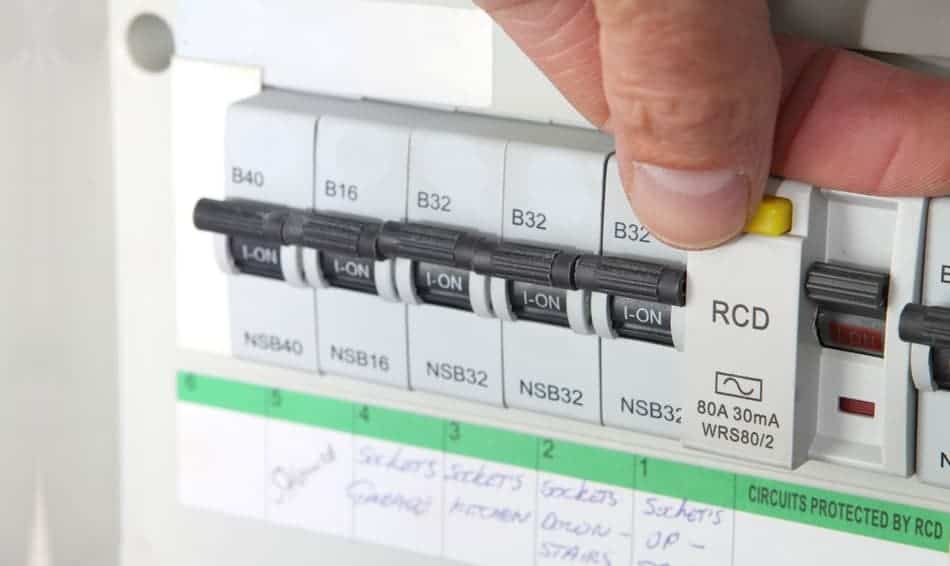
Branch circuit breakers control a branch of your home, such as the bedrooms, kitchen, or basement. If you need to shut off the electricity only in a certain part of the house, that is, for a particular room, turn off the breaker that serves the problem circuit. This will give the rest of the house electricity at its disposal and only that room will not be energized.
To identify the correct breaker, use the sign that is stuck to the back of the service panel door. Once you find the right circuit breaker, just flip the breaker’s toggle switch to OFF. If you have difficulty finding the correct circuit breaker for the circuit you will work on, you can simply use an electronic circuit breaker finder.
How do You Check if Electricity is Off?
The best and easiest way to check that you turned off the electricity in the house is to go to an outlet on a circuit on which you know it must be turned off and see if there is the voltage. You can do that by inserting the voltage tester and measure the voltage on that outlet. If the tester reads 0V, then you know for sure that there is no current in that circuit. With a multimeter, you can also measure voltage. Normal voltage is 110 to 120 volts.
Other Types of Circuit Breakers
There are a few types of circuit breakers that shut off when they sense an overload. If you want to turn off a circuit that is protected by a pullout fuse block, you need to grasp the block’s handle and pull it toward you. When the block is out, then you can remove the fuse from its mounting clips in the block. If you have a special tool that is called a fuse puller, it will make this job easier.
But if you want to shut off a circuit that is protected by a screw-in fuse, just grasp the fuse’s glass rim and unscrew it (counterclockwise). Remember not to put your fingers near the socket while doing so. You can use a special fuse-pulling tool, that is available at home centers. This will make this job safer.
Older Homes Have a Fuse Panel
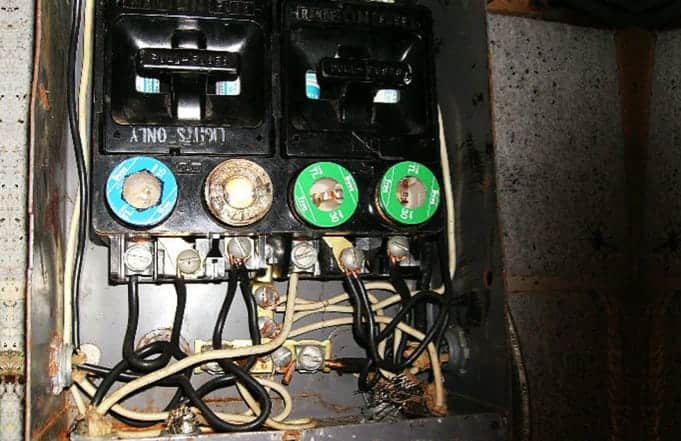
Although fuse panels have not been installed in homes for many decades, some older homes still have service panels with fuses. These panels typically have one or more blocks that contain cartridge fuses. One of these blocks usually serves as the main fuse, for the service panel.
To turn off the power to all branch circuits, you must grip the handle on the main disconnect block with just one hand and pull it straight out, so you can remove the block completely from the panel. The reason why you need to use just one hand is for a safety precaution, so you can prevent electrical current from passing through the body in the event of a short circuit.
Should You Cut the Electricity Before Going on Vacation?
Before going on vacation, various precautions should be taken. We must think about our electrical appliances. Should the electricity be cut before departure? In the event that no appliance works during an extended absence, the best thing to do would be to turn off the electricity instead of unplugging the equipment one by one. It would then be very convenient to press the red button on the circuit breaker when you come back from vacation to restart everything.
You should know that, even when switched off, some devices consume energy when they are in standby mode. However, before cutting off the electricity, a few checks and precautions before going on vacation are essential and you must take into account the specificity of each device in the house.
Provide Easy Access to Your Main Electrical Panel
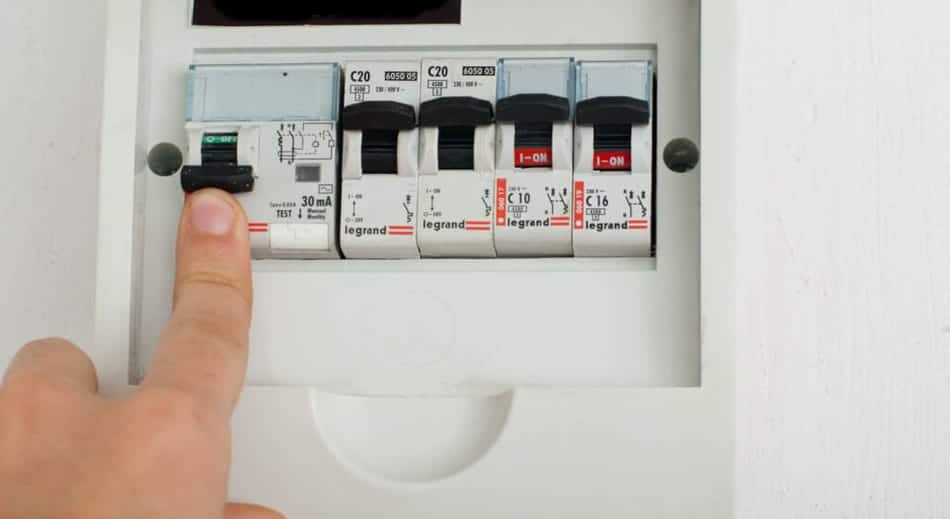
Always make sure that you can get to your main electrical panel very quickly and easily if there is some kind of emergency in the house. Also, all of your housemates must know where to find the panel and explain to them that the path needs to be clear to access it. It would also be advised that if one of your household members does not know how to turn off or on the main fuse that you show them how to do it.
Is it Bad to Shut Off Main Breaker?
No, it is OK if you want to turn off electricity at the main breaker. It will not cause any damage to your home. Keep in mind as you do this, that you may disrupt the operation of your computer, the TV, HVAC, and other components that may require rebooting or resetting once you turn off the power in your house.
Can House Electricity Kill You?
Yes, any electrical device that is used on a house wiring circuit can cause fatal consequences, or kill you! Power used in the house has 120 volts AC electricity that is dangerous, and any electrical current that is between 100 and 200 mA is lethal.
Call an Electrician For Any Electrical Repair
Whatever electrical work you need to do in your house, your best bet is to hire an electrician. Such a craftsman will intervene without risk on your electrical system and will ensure proper installation or repair. However, remember to select your craftsman carefully by finding out about his skills but also about his prices. It’s not smart to play with electricity if you’re not trained for it, so I advise you not to get into it yourself.
Final Thoughts
All homes have a main electrical panel, that is commonly known as a fuse box or a breaker box. Therefore, turning off the power at the main electrical panel is the best and safest way to be sure you turn down a circuit before you start working on something. If you want to turn off electricity in just one room, turn off the breaker circuit breaker. You can easily turn off the power to all of the circuits at once, by using the main fuse or main breaker. I hope this article has helped you and that you have learned another useful skill that you will use.


